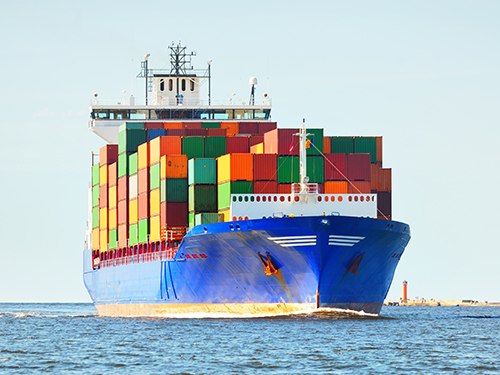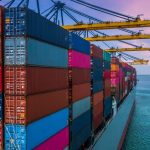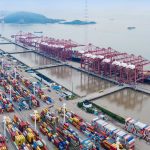Rates for shipping containers from Asia to the US continued to slide this week as congestion has largely dissipated at East and West Coast ports amid slowing demand from US consumers for goods, highlighting this week’s logistics update.
Overall, pressure on global supply chains decreased considerably in February and are now below the historical average, according to the Global Supply Chain Pressure Index (GSCPI) created by the Federal Reserve Bank of New York.
CONTAINER SHIPPING
Rates for shipping containers from east Asia and China to both US coasts fell further this week, according to data from online freight shipping marketplace and platform provider Freightos and the Drewry World Container Index.
Rates to the West Coast are about 93% lower than a year ago, and 30% lower than they were at any point in 2019.
Rates to the East Coast are 87% below year-ago levels.
Judah Levine, head of research at Freightos, said it remains unclear if volumes that shifted to the East Coast because of backed-up ports and potential labour disruptions will be returning to the West Coast.
Shipping analysts with freight forwarder Flexport said this week during a webinar that ports are now “wide open” after working through backlogs created from surging demand during COVID-19 lockdowns.
Supply chain advisors Drewry showed a 3% decrease in its composite index this week, which is down by 80% compared with the same week a year ago.
Container ships are relevant to the chemical industry because while most chemicals are liquids and are shipped in tankers, container ships transport polymers such as polyethylene (PE) and polypropylene (PP), which are shipped in pellets.
LIQUID CHEMICAL TANKERS
Rates for liquid chemical tankers softened this week across multiple trade lanes.
Rates from the US Gulf to Europe softened for all quantities assessed by ICIS, as did US Gulf to Asia rates for 5,000 tonne parcels.
Rates edged lower from the US Gulf to Brazil for 2,000 tonne parcels.
Some delays have been seen in the US Gulf as it has entered the fog season.
Brokers said that they believe February vessels have been pushed into March due to fog delays in the USG.
This situation has created more tonnage than expected, resulting in more available space in March.
TRUCKING
Spot and contract trucking rates ticked slightly lower this week, according to data from FreightWaves Sonar.
A main reason for falling rates across various modes of transportation is waning consumer demand.
The National Retail Federation (NRF) said it expects import cargo volume at the nation’s major container ports to begin slowly climbing again but is likely to remain below 2022 levels through mid-summer.
“There are many uncertainties about the economy, but we expect imports to show modest gains over the next several months,” Jonathan Gold, NRF vice president for supply chain and customs policy, said. “Growth is a positive sign, but levels are still far below normal and retailers will remain cautious as they work to keep inventories in line with consumer demand.”
Trucking is vital to the chemical industry.
In 2020, trucks accounted for 57% of chemical tonnage shipped and 70% of chemical transportation costs, while water transport accounted for 20% of tonnage and 7% of transportation costs, according to American Chemistry Council (ACC) data.
RAILROADS
US freight railroads remain under pressure to improve service after Norfolk Southern (NS) had multiple derailments over the past several weeks.
The railroad said it has found that a specific model and series of railcars had loose wheels, which could cause derailments, and has reported its findings to the National Transportation Safety Board (NTSB) and the Federal Railroad Administration.
The NTSB said earlier in the week it has opened a special investigation into NS, and the company announced its own six-point plan to improve service.
In the US, chemical railcar loadings represent about 20% of chemical transportation by tonnage, with trucks, barges and pipelines carrying the rest.
In Canada, chemical producers rely on rail to ship more than 70% of their products, with some exclusively using rail.
Source: Hellenic Shipping News





